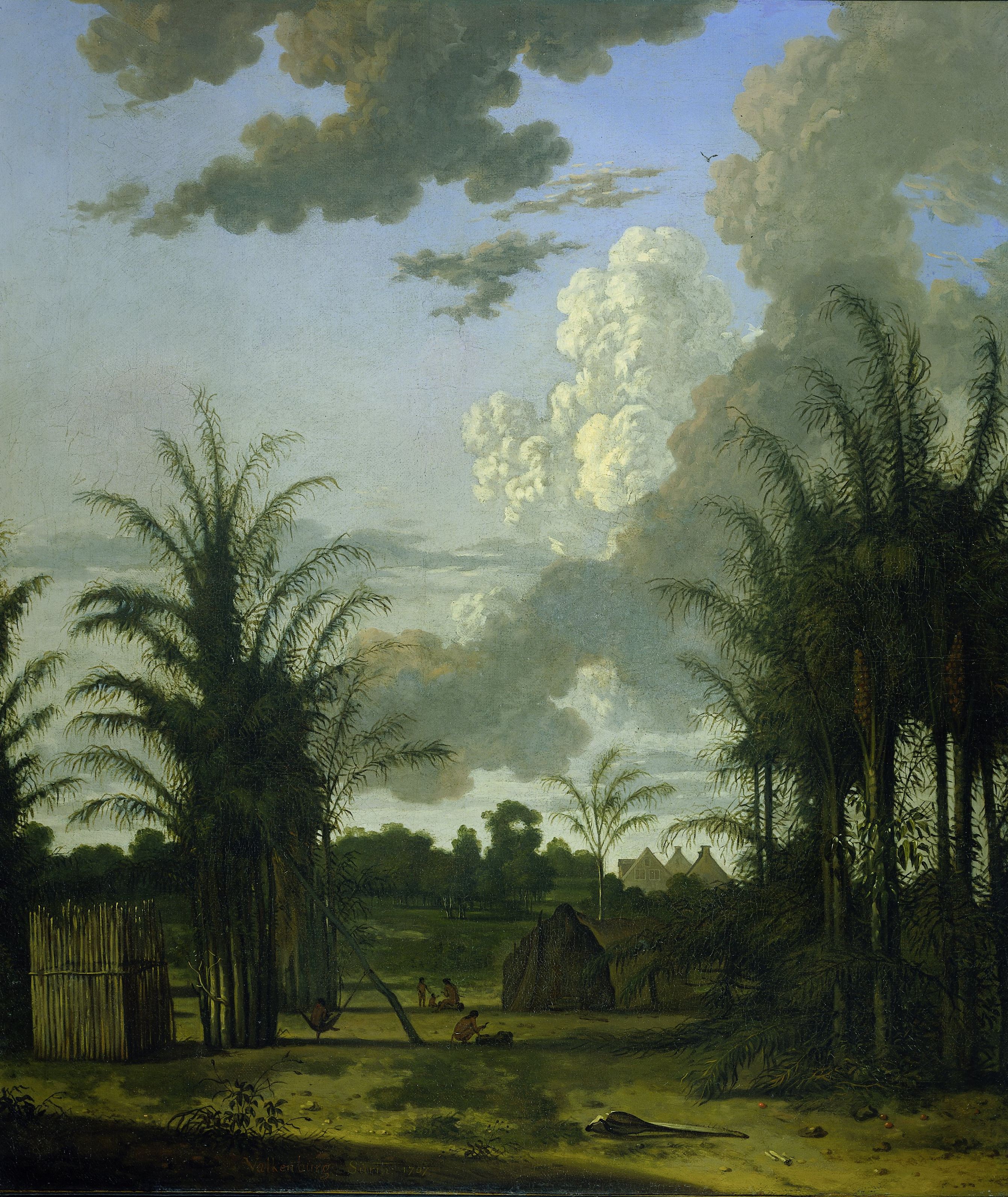A very important exhibition is talking place currently in Amsterdam at the Rijksmuseum: Slavery. Ten True Stories. In this exhibition, the museum focus for the first time on slavery in the Dutch colonial period. This era spanning 250 years is an integral part of the history of the Netherlands. It was a time when people were reduced to property, to objects, to items in the accounts. The exhibition tells ten true stories from people who were involved in slavery in one way or the other.
The plantation in Suriname we present today was at one point inherited by the man called Jonas Witsen. Jonas was a great art lover and had no plans to ever visit his plantations. As he was on good terms with the painter Dirk Valkenburg, Jonas commissioned Valkenburg to travel to Suriname and document his property so he could find out more about the nature and condition of his inheritance. Valkenburg was to go to Suriname for four years to take charge of their bookkeeping and to paint "all three plantations from life, as well as other rare birds and crops," and that he "agrees not to sell any paintings, watercolours or drawings or other art he makes during the stipulated time, or to paint for anyone else than for Mr Witsen." For the first two years Valkenburg was to earn 500 guilders a year, and thereafter 600, with the prospect of a bonus at the end of the contract’s term. He was to be given a good room and may dine at the manager’s table. Also, a "boy was assigned to serve him, to be treated not as a slave but as a child and not harshly."
The private lives of the slaves on the plantation were very circumscribed; everything was predicated on the work on the plantation, and they had scarcely any time or space for themselves. The people in slavery were usually given permission to celebrate once a year, most commonly after the harvest. They came together to make music, to dance, and to practice their own religious rituals. Valkenburg recorded one such rare moment of togetherness and relaxation in one of the paintings he produced for Witsen. It is a unique representation of people in slavery, with portraits that display a variety of expressions and emotions.
Only on the weekends was there time for contact with family and the cultivation of their own subsistence crops. Witsen, however, had stipulated in his letter that even the free Saturday, specified in his benefactor's will, was to be rescinded. The owner felt the regular free Sunday provided more than enough opportunity for the enslaved people to work their small fields and visit friends and family on nearby plantations.
We share today's story thanks to the Rijksmuseum.
P.S. Slavery. Ten True Stories is a must-see exhibition for the upcoming season. Here are five cities to visit this Summer for the best art exhibitions.


 Dirk Valkenburg
Dirk Valkenburg